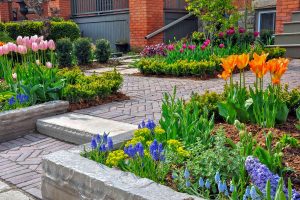Home gardening is a popular hobby that not only provides an opportunity to connect with nature, but also promotes physical and mental well-being. With the increasing awareness of the importance of healthy eating and sustainable living, home gardening has become a viable option for many people. In this guide, we will explore the basics of home gardening, providing tips and techniques for beginners to start their own garden and enjoy the blossoming success.
I. Preparing the Garden Bed
Before starting a home garden, it is essential to prepare the garden bed. This involves selecting the right location, soil preparation, and choosing the appropriate plants.
A. Location Selection
The location of the garden bed is critical to the success of home gardening. It should receive adequate sunlight, preferably at least six hours a day, and be protected from strong winds. The area should also be accessible, making it easy to tend to the plants.
B. Soil Preparation
Soil preparation is a crucial step in home gardening. Testing the soil pH level is essential to determine if it is acidic, alkaline, or neutral. Most vegetables prefer a slightly acidic to neutral soil pH (between 6.0 and 7.0). Adding organic matter such as compost or well-rotted manure can improve soil structure and fertility.
C. Choosing the Right Plants
Selecting the right plants for your garden bed is important for its success. Consider factors such as climate, soil type, and the amount of sunlight and water required by the plants. Some popular and easy-to-grow vegetables include tomatoes, peppers, cucumbers, carrots, and herbs like basil and mint.
II. Starting Seeds Indoors
Starting seeds indoors is a great way to get a head start on the growing season. It also allows for a wider variety of plants to be grown, as not all seeds are available as seedlings.
A. Choosing the Right Containers
Select containers that are at least 3-4 inches deep and have drainage holes to prevent waterlogged soil. You can use small pots, seed trays, or cell packs.
B. Preparing the Seeds
Soak the seeds in a cup of water for 24 hours before planting. This will help to speed up germination.
C. Planting the Seeds
Fill the containers with a good quality potting mix. Plant the seeds at the correct depth and water gently. Keep the soil consistently moist but not waterlogged.
D. Providing Adequate Light
Most seedlings require 12-14 hours of light per day. Place them in a sunny window or use grow lights.
III. Transplanting Seedlings
Transplanting seedlings from indoors to outdoors can be a delicate process. It is essential to harden off the seedlings before transplanting them to the garden bed.
A. Hardening Off
Hardening off involves gradually introducing the seedlings to outdoor conditions over the course of 7-10 days. Start by moving them to a shaded area during the day and bringing them back indoors at night. Gradually increase the amount of sunlight and wind exposure.
B. Transplanting
Transplant the seedlings into the garden bed after the last frost date in your area. Dig a hole slightly deeper than the root ball and gently remove the seedling from its container. Plant the seedling in the hole and firm the soil around the roots. Water well.
IV. Maintaining the Garden
Maintaining the garden requires regular attention to ensure the plants are healthy and thriving.
A. Watering
Water the plants deeply and consistently, especially during periods of drought. Avoid overwatering, which can lead to root rot and other problems.
B. Weeding
Weeding is an essential part of maintaining the garden. It prevents weeds from competing with the plants for water, nutrients, and sunlight. Use a hoe or hand weeder to remove weeds when they are still young.
C. Pest and Disease Management
Monitor the plants regularly for signs of pests or diseases. Use organic methods to control them, such as introducing beneficial insects or spraying with neem oil.
V. Harvesting and Enjoying
The most rewarding part of home gardening is harvesting and enjoying the fruits of your labor.
A. Harvesting
Harvest vegetables at the appropriate time to ensure optimal flavor and nutrition. Check the seed packet or consult with a gardening expert to determine the best time to harvest.
B. Preserving the Harvest
Preserve the harvest by canning, freezing, or dehydrating the produce. This will allow you to enjoy the fruits of your labor throughout the year.
C. Enjoying the Fruits of Your Labor
Enjoy the fruits of your labor by incorporating the fresh produce into your meals. Share your harvest with family and friends, or donate it to a local food bank.
Home gardening is a rewarding hobby that not only provides fresh produce but also promotes physical and mental well-being. By following the tips and techniques outlined in this guide, beginners can start their own garden and enjoy the blossoming success. Remember to choose the right location, prepare the soil, select the appropriate plants, start seeds indoors, transplant seedlings, maintain the garden, and harvest and enjoy the produce. Happy gardening!
















Add Comment